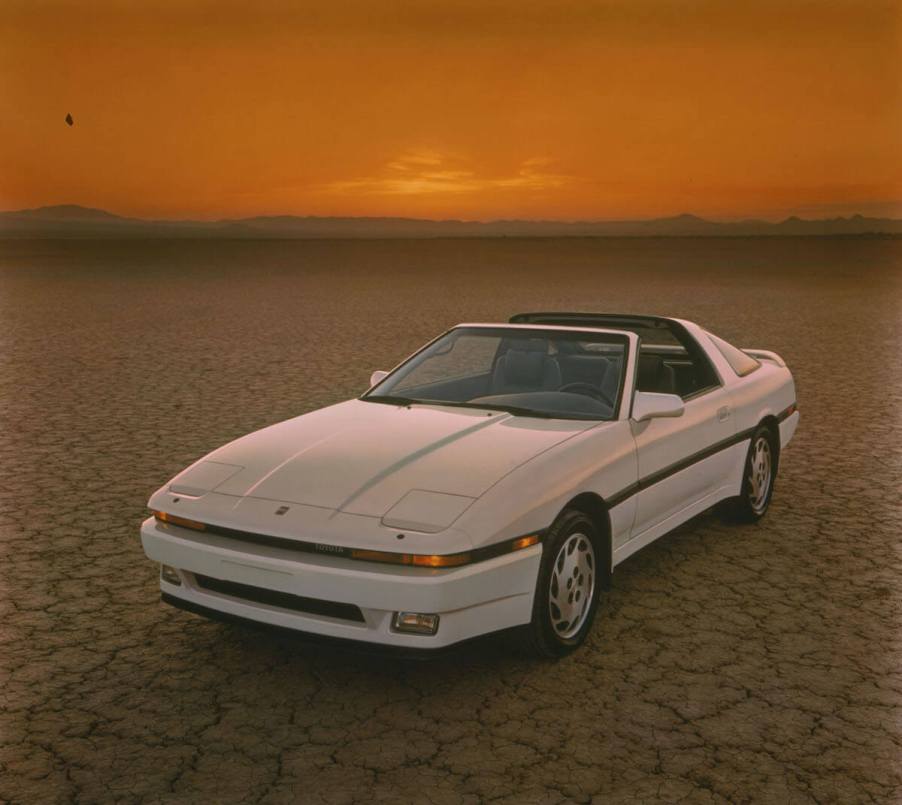
Is the Mk3 Toyota Supra a Hidden Gem In the Used Sports Car Market?
When it comes to the Toyota Supra, the fourth generation (Mk4) gets all of the glory. From the Fast and Furious franchise to inflated sale prices in the used market, the Mk4 Supra garnered a lot of attention from the masses over the past couple of decades. But what about the third-generation Supra (Mk3)? Could that iteration of Toyota’s old halo car be a hidden gem enthusiasts are sleeping on? Let’s take a closer look.
The Mk3 Toyota Supra was a departure from the Celica family

The Toyota Supra originally debuted in 1979 as the Celica Supra. It was a competitor to the Datsun 280ZX at the time and had a hatchback silhouette, which looked very Celica-like. For the second generation, from 1982 to 1986, the Celica Supra took on sleeker body lines with fender flares and wider wheels and tires. It looked better but was still technically a Celica – until 1986.
The Mk3 Supra debuted in 1986 solely under the “Supra” nameplate. The Celica then became its own platform, which was a front-drive sports coupe with a more affordable price tag. The Supra, on the other hand, maintained its rear-drive configuration and gained a sleeker look than ever before.
Inside, the Mk3 Supra came with a 2+2 seat configuration with a small rear-seat area, a glass hatch, and the option for a removable roof. Another notable feature was the Supra’s Electronic Modulated Suspension, which was an electronically controlled independent suspension.
The Mk3 Supra came with a couple of different engines
We can’t talk about a sports car without talking about the engine. When the Supra debuted in 1986, it came with a 3.0-liter DOHC, inline-6 engine that produced 200 hp and 196 lb-ft of torque. It was robust for a naturally aspirated engine, even by today’s standards.
Toyota spruced the Supra’s engine up in 1987 by adding a turbocharger and intercooler to the setup. The engine now produced a more fitting 230 hp and 246 lb-ft of torque. That might not sound like much more, but it enabled the car to reach a top speed of 150 mph.
Toyota added a few upgrades from 1989 to 1992

Over the subsequent years, from 1988 to 1992, the Mk3 Supra underwent a few interior and exterior changes. The most notable change was a facelift for the 1989 model year. That change included a new grille, a new spoiler, and new taillights. The engine also received some changes to the turbocharger, the intake, and the wastegate.
Despite these changes, Supra sales decreased over time, and 1992 marked its last year of production. In 1993, Toyota released the venerable Mk4 Supra; the rest is history. Since then, many enthusiasts have been modifying Mk3 Supras and capitalizing on their stout engines.
Although the Mk3 Supra didn’t come with the same 2JZ engine that the Mk4 Supra did, the 7M-GTE engine still proved to be a good platform. According to the Toyota Supra Community, various turbocharger and camshaft upgrades can be made to extract a lot of power from the 7M-GTE engine.
How much does a Mk3 Supra cost?
In today’s market, the Mk3 Supra can cost anywhere between $15,000 to $25,000, according to a recent nationwide search on CarGurus. That’s pricey for a 30-year-old car, but the price pales in comparison to the near $100,000 price tag the Mk4 Supra commands.
Case in point, the Mk3 Supra is a hidden gem for anyone in search of an older sports car to modify. But even without modifications, the Mk3 Supra is still a great car.





